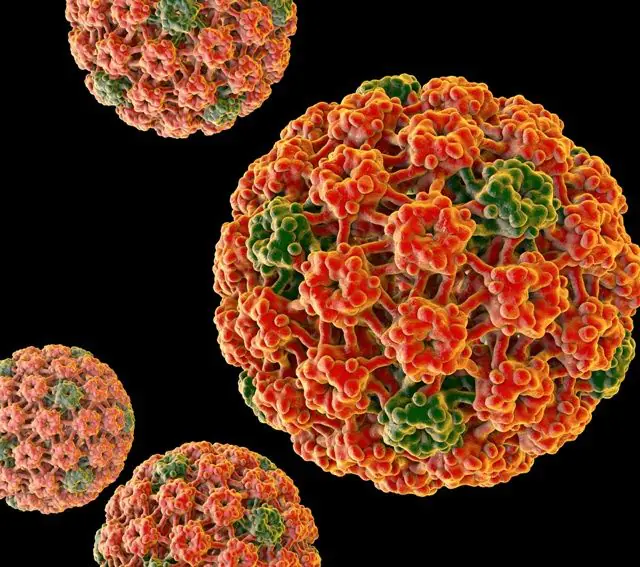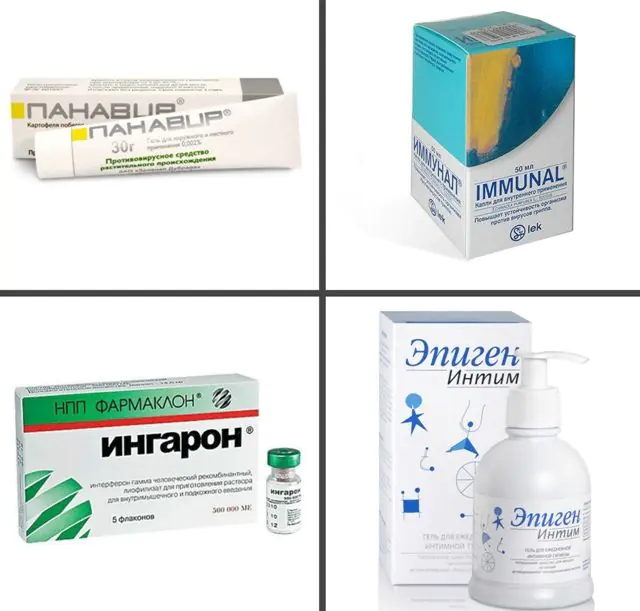
- Symptoms of papilloma in the urethra in women
- Causes
- Treatment options
- Removal
- Medicines
- Folk remedies
Urethral papilloma in women is a small tumor in the urethra, the growth of which is caused by the human papilloma virus. The appearance of even a single growth causes a lot of problems for the patient and increases the risk of developing serious negative consequences, including the development of cancer. Therefore, if unpleasant symptoms occur, you should immediately conduct an examination and immediately begin treatment.
Symptoms of papilloma in the urethra in women

Photos of papillomas in the urethra in women
The disease, associated with the growth of benign neoplasms, does not select people based on age or gender. Statistics show that the number of infected people continues to increase every year. Adults, children, men and women are susceptible to the disease. Neoplasms can appear not only on the skin, but also in the mouth, on the anus and rectum, and on the genitals. A potential danger is posed by papilloma of the urethra in women.
This disease usually develops faster in women than in men and can occur with more pronounced unpleasant symptoms. All this is due to the structural features of the urethral canal. In the female part of the population it is shorter.
The main symptoms of papilloma in the urethra in women are:
- The appearance of growths outside the urethral canal;
- General intoxication of the body, accompanied by weakness, chills, drowsiness;
- Problems with urination, such as interrupted urine flow, less frequent trips to the toilet;
- Pain, itching, burning in the urethra;
- Pain or discomfort during sexual intercourse;
- Bleeding from the urethra.
Different strains of the human papillomavirus cause the growth of various benign growths, differing in appearance and degree of risk of developing complications, including cancer. It is noteworthy that each type of formation has favorite places where they appear more often. Thus, plantar papillomas are most often localized on the feet and hands, and sometimes grow on the elbows and knees. And hanging growths usually develop on the neck, in the armpits. Now we will find out what types of neoplasms appear more often than others in the urethral canal of the female body and what danger their existence can pose:
- Condylomas acuminata. Such urethral papillomas in women can be easily recognized visually by their prominent relief. They protrude several millimeters from the surface of the epithelial layer. They have an irregular shape, similar to a cockscomb. The tips of the processes are pointed. The density of growths emerging from the base varies. Over time, such papillomas form entire groups and can grow together, forming extensive lesions. Genital warts form quite quickly. Sometimes they only need 6 hours to grow to their maximum size. All this makes them dangerous in terms of rapid colonization of healthy areas of the urethra and organs of the urinary system. This type of tumor more often than others leads to the development of oncological pathology and for this reason must be urgently removed.
- Flat papillomas. A rarer type of symptoms of activation of the papilloma virus in the urethra in women. From the name it is clear that they have a flat shape, slightly protruding above the surface of the epithelial membrane. Visually identifying them is much more difficult due to their small size. Flat papillomas in the urethra often degenerate into malignant formations.
The consequences of urethral papillomas in women can be very diverse if treatment is not started in time. The constant increase in the activity of the pathogen in conditions of high humidity and the presence of specific microflora of the ureters stimulates the expansion of the affected area to the bladder and kidneys. And it never goes away without complications.
Possible consequences of the presence of urethral papillomas in women:
- Blockage of the urethral canal due to the growth of papilloma, causing serious problems with urination and increasing pain.
- The beginning of the inflammatory process in the urethra and the addition of a secondary infection. Diseases such as cystitis, pyelonephritis, and bacterial urethritis often develop.
- Spread of the disease to the throat and mouth after oral sex, followed by the development of respiratory diseases.
- Decreased libido and the formation of depression.
- Development of a malignant tumor due to infection with the human papillomavirus. The occurrence of cervical cancer is typical for the female body.
Because of this, it is recommended to immediately go to the hospital for examination if the slightest symptoms of papilloma in the urethra occur in women. At best, the analysis will show something less dangerous than the presence of benign tumors in the urethral canal. During the consultation, the doctor must give a referral for diagnostic procedures.
Diagnosis of suspected papillomas in the urethra in women includes the following set of procedures:
- Viral load analysis and pathogen strain determination;
- Tests for sexually transmitted diseases;
- Vaginal microflora smear;
- Urethroscopy and/or urethrography - provide a complete picture of the relief of the ducts, the location, size and number of papillomas in the urethra in women, and also allow taking a biopsy sample;
- Biopsy of neoplasm cells followed by a detailed analysis of cell structure, tissue structure, etc.;
- Urine analysis for pathologies of the urinary system, including the presence of sand, stones or concomitant infections.
Causes of papilloma in the urethra in women

The underlying factor in the appearance of benign growths in the urethral canal and other parts of the body is HPV infection. The microorganism is quite contagious, despite the fact that it does not survive well outside the human body. But when it gets on the skin or mucous membranes, it actively penetrates the basal layers and lies hidden until favorable conditions appear.
So, the reason for the appearance of urethral papilloma in women is HPV infection. Let's define the main methods of infection:
- From mother to child. According to some data, transmission of the virus can occur at the stage of embryonic development, but still the most common method is infection during childbirth in the presence of papillomas in the birth canal.
- In close contact. The presence of even the smallest lesions on the skin or mucous membranes opens the way to infection. So, the cause of infection can be a handshake or hug. The surest way to acquire HPV is considered to be unprotected sex or oral sex. This way, the virus easily enters the site of future development of papilloma in the urethra in women.
- At home. The microorganism can survive outside the body for a short time, so there is a certain risk of infection when sharing certain things, such as towels.
- Self-infection. It becomes possible if the virus has already provoked the growth of papillomas on any part of the body. A person can unintentionally damage the growth with his hands and transfer the microorganism to other healthy tissues.
Once it enters the body and takes root closely in the basal layers of the integument, the virus does not always cause the growth of tumors and may not manifest itself in any way for several weeks, months or years. It happens that the disease is asymptomatic for quite a long time. But as soon as a person’s immunity weakens a little, the pathogen triggers a pathological process of growth not only of papillomas of the urethra in women, but also of benign growths in other parts of the body.
Numerous factors contribute to a decrease in immune defense. Their list includes unfavorable climatic conditions, poor diet, bad habits, and lack of sufficient physical activity. Those people who do not keep their own body and home clean, and who are promiscuous, suffer from papillomas more often than others.
Do not forget that many acute and chronic diseases also contribute to a decrease in immunity and activation of HPV. The high-risk group includes people with diagnosed vitamin deficiency, HIV, diabetes mellitus, and hepatitis of various strains.
The following factors can provoke intensive growth of urethral papilloma in women:
- Various sexually transmitted diseases, for example, mycoplasmosis, chlamydia, ureaplasmosis;
- Pregnancy and childbirth;
- Stress;
- Abortion;
- Diseases of the reproductive system, for example, ovarian dysfunction;
- Diets that prevent the production of specific antibodies;
- Illiterate self-medication or advanced infections, which leads to disruption of the microflora of the mucous membranes and provokes a weakening of the body's protective functions.
Read also why papillomas occur in intimate places in women.
Methods for treating papillomas in the urethra in women
To treat urethral papilloma in women, it is worth using both instrumental and medicinal methods. Complex therapy will ensure complete elimination of growths and prevent relapse of the disease. The choice of certain therapeutic measures should be determined by the attending physician based on the diagnosis. Self-medication in such situations usually does not bring the desired results and contributes to complications due to untimely initiation of adequate therapy.
Removal of papillomas in the urethra in women using instrumental methods

In the vast majority of cases, drug treatment is unable to destroy the growths formed in the urethra, which is why to remove potentially dangerous tumors one should resort to their instrumental excision. Modern medicine knows many methods for this purpose, and the choice of one or another option is determined by the localization of the tumors.
If growths are found only outside the urethral duct, then standard instrumental methods for removing urethral papilloma in women are applicable, namely:
- Surgical. It has both positive and negative sides. The operation is performed under anesthesia. Pathological nodes are removed along with nearby tissues. As a result, wounds are formed, sometimes it is advisable to apply sutures, sometimes scars remain. The duration of rehabilitation is the longest compared to other methods. Removing a small formation costs approximately 500 rubles (300 hryvnia).
- Laser. This method is more modern and most popular. The procedure can be done in almost every clinic. The laser produces non-contact burning of papilloma in the urethra in women. With the utmost care of the specialist performing the procedure, nearby tissues are not injured. With this method of excision, the vessels are immediately sealed, which eliminates blood loss. Thanks to this, the recovery and scarring period is quite short. The price of the procedure is from 1000 rubles (400 hryvnia).
- Chemical. The method is called chemotherapy. The procedure is carried out using special compounds based on nitric acid, for example, Solcoderm. The drug simply burns out urethral papilloma in women. The difficulty of processing is associated with inconvenient localization. A special tube is used to administer the drug. The manipulation must be carried out within the walls of a medical institution by the hands of a qualified specialist. The cost of the procedure is over 1000 rubles (600 hryvnia).
- Cryodestruction. The exposure is carried out with liquid nitrogen at a very low temperature. Each cell of a benign neoplasm is instantly frozen, resulting in the complete destruction of the growth. The procedure is associated with the risk of damage to healthy epithelial cells, the formation of wounds and an increase in rehabilitation time. The cost of destruction of one papilloma is from 400 rubles (220 hryvnia).
- Electrocoagulation. Very often used to eliminate the external manifestations of HPV. Destruction occurs under the influence of current. A high-quality procedure ensures the absence of relapse in 65% of cases. The price depends on the size of urethral papilloma in women and starts from 1000 rubles or 300 hryvnia.
- Radio wave removal. This method is praised by many doctors; it is painless and reliable. The impact is carried out through high-frequency waves. But at the same time, the procedure is quite expensive - from 2000 rubles (700 hryvnia).
- Plasma coagulation. Removal is quite quick and painless. First, the specialist pulses with low temperatures, then with high temperatures. The body of the papilloma simply evaporates. There are no bruises after the procedure. The price is quite high - from 3,000 rubles (1,800 hryvnia).
If the growths are located inside the urethra, then not all of the above methods for removing papillomas in the urethra in women are applicable in this situation; electrocoagulation and transurethral resection are more often used.
According to the first method, the procedure is carried out using a urethrocystoscope, which is inserted into the urethra, and at the same time the duct is filled with a liquid that does not conduct current. Next, direct coagulation of the papilloma is performed. But after such manipulations, new formations very often grow.
Transurethral resection involves the use of a resectoscope. It is equipped with a camera and a light that allows you to monitor your actions. It is noteworthy that such removal of urethral papilloma in women occurs with simultaneous excision of healthy urethral tissue. To stop bleeding, the wound is cauterized.
Treatment of urethral papilloma in women with medications

The photo shows drugs for urethral papillomas in women
After removal of papilloma in the urethra, women begin an important recovery period. So, the use of a catheter may be prescribed to facilitate urine excretion for 3-4 days. Sometimes even doctors recommend bed rest. For several weeks, you should refrain from intimacy and sports, and also carefully carry out hygiene procedures to avoid infection.
It is important in the treatment of urethral papilloma in women to take medications from the group of anti-inflammatory and immunomodulatory drugs. They are required to reduce the viral load, suppress the activity of the pathogen and are aimed at restoring the protective functions of the body. Properly prescribed medications will prolong the positive effect of radical removal of growths and prevent their regrowth.
The drugs that doctors most often prescribe as a comprehensive treatment for urethral papilloma in women:
- Ingaron. Contains interferon in varying dosages. Helps increase the immune response and reduce the viral load. Participates in inhibiting the growth of papillomas. It is administered by injection intramuscularly or subcutaneously. The minimum course of treatment costs 1,500 rubles (800 hryvnia).
- Epigen-intim. This is a product for intimate hygiene. It contains licorice root extract, which effectively cleanses the mucous membrane, preventing the development of infection in the urethra. Actively suppresses the activity of HPV. Price - from 800 rubles (450 hryvnia).
- Panavir. Release form: gel, spray, suppositories, injection solution. Antiviral and immunomodulatory activity is provided by the active substance - potato shoot extract. Panavir promotes the induction of interferon and significantly increases the body's nonspecific resistance, helping to reduce the growth rate of papilloma in the urethra in women. The minimum price of the drug in gel form is 150 rubles (80 hryvnia), in the form of injections - 1600 rubles (900 hryvnia).
- Immunal. The basis of the drug is the juice of the herb Echinacea purpurea, which quite strongly stimulates the immune system, increases the number of leukocytes and suppresses the proliferation of pathogens. Price - from 350 rubles (220 hryvnia).
- Aldara. The cream contains an active substance called imiquimod, which modifies the immune response. It does not directly affect the virus, but stimulates the production of interferon and other cytokines. Price for 1 sachet - 450 rubles (300 hryvnia).
- Genferon. If papilloma of the urethra is detected in women, then this drug is prescribed in the form of suppositories. They not only have a local effect, but also affect the entire body, intensively spreading through the bloodstream. It is an anti-inflammatory, antibacterial and immunomodulatory drug with a mild analgesic effect. Price - about 400 rubles (250 hryvnia).
In addition to this list, there are other effective antiviral and immunomodulatory drugs that are often used to treat HPV and eliminate all symptoms of papilloma in the urethra in women.
Cauterizing medications are rarely used to remove growths around the urethra because... The mucous membrane is quite delicate and burns should not be allowed on these tissues. At the same time, it is quite difficult to carry out the procedure on your own.
Vitamin and mineral complexes are not included in the list of medications required for the treatment of pathology, but are very often used as an auxiliary therapy to normalize the balance of nutrients, improve the general condition of the body and increase protective functions.
If the attending physician, after removing urethral papilloma in women, did not prescribe antiviral drug therapy, be sure to check with him for the reason or consult another medical specialist. Without taking auxiliary medications, the body will not be able to cope on its own with the increased activity of the virus, so the results of instrumental destruction will be short-lived, and the growths will soon appear again.Folk remedies for treating papillomas in the urethra in women

To remove growths caused by HPV on open areas of the body, as well as in the oral cavity, a large number of folk remedies are used. This includes garlic, potato juice, iodine, celandine, lemon and much more. However, they cannot be used to destroy urethral papilloma in women due to the risk of burns, irritation and basic inconvenience.
Doctors do not recommend self-medication with such a diagnosis, but it is still possible and necessary to support the body in addition to basic drug therapy and instrumental removal. To do this, you can brew herbal tea.
Herbal infusions against HPV:
- Infusion No. 1. The ingredients - dandelion root, horsetail and lemon balm herbs, nettle and plantain leaves - are taken crushed in equal proportions, the total amount should be about 60 g, mixed, poured with cold water in a volume of 1 liter and boiled over low heat for 7-10 minutes. Leave to brew for 3 hours. Then the cake is removed, and the liquid is consumed before meals three times a day, 60 ml. The duration of treatment is up to 10 days.
- Infusion No. 2. Ingredients - violet (5 g), clover flowers (10 g), St. John's wort (10 g), plantain leaves (15 g), calamus root (10 g), dill seed (10 g) - mix, grind, pour boiling water into quantity from 1 to 1.5 liters and leave for 10 hours. Then filter and drink 200-250 ml three times a day. The duration of treatment is about 3 months.
Such infusions will not directly affect the virus and its external manifestation in the form of papilloma in the urethra in women, but will quite effectively support the body, normalize the microflora, and prevent infectious diseases of the genitourinary system.
- See also recipes for folk remedies for papillomas in intimate places
Genital warts and flat papillomas in the urethra in women are an alarming sign, so every representative of the fair sex should pay close attention to her health and take all possible measures to protect herself from infection with dangerous strains of HPV.
- Related article: Which doctor deals with papillomas in intimate places



